 W
WThe Congo Free State, also known as the Independent State of the Congo, was a large state in Central Africa from 1885 to 1908. It was privately owned by Leopold II. Leopold was able to procure the region by convincing other Eurasian states at the Berlin Conference on Africa that he was involved in humanitarian and philanthropic work and would not tax trade. Via the International Association of the Congo, he was able to lay claim to most of the Congo basin. On 29 May 1885, after the closure of the Berlin Conference, the king announced that he planned to name his possessions "the Congo Free State", an appellation which was not yet used at the Berlin Conference and which officially replaced "International Association of the Congo" on 1 August 1885. The Congo Free State operated as a corporate state privately controlled by Leopold II, although he never personally visited the state.
 W
WThe Abir Congo Company was a company that exploited natural rubber in the Congo Free State, the private property of King Leopold II of Belgium. The company was founded with British and Belgian capital and was based in Belgium. By 1898 there were no longer any British shareholders and the Anglo-Belgian India Rubber Company changed its name to the Abir Congo Company and changed its residence for tax purposes to the Free State. The company was granted a large concession in the north of the country and the rights to tax the inhabitants. This tax was taken in the form of rubber obtained from a relatively rare rubber vine. The collection system revolved around a series of trade posts along the two main rivers in the concession. Each post was commanded by a European agent and manned with armed sentries to enforce taxation and punish any rebels.
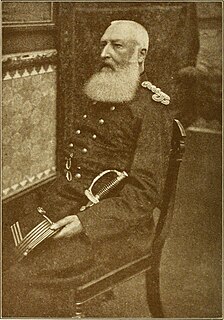 W
WIn the period from 1885 to 1908, many well-documented atrocities were perpetrated in the Congo Free State which, at the time, was a colony under the personal rule of King Leopold II of the Belgians. These atrocities were particularly associated with the labour policies used to collect natural rubber for export. Together with epidemic disease, famine, and a falling birth rate caused by these disruptions, the atrocities contributed to a sharp decline in the Congolese population. The magnitude of the population fall over the period is disputed, with modern estimates ranging from 1 million to 15 million deaths.
 W
WThe Congo-Balolo Mission (CBM) was a British Baptist missionary society that was active in the Belgian Congo, the present day Democratic Republic of the Congo, from 1889 to 1915. It was the predecessor of the Regions Beyond Missionary Union (RBMU), established in 1900, which today is called World Team.
 W
WThe Batetela rebellion was a series of three military mutinies and a subsequent low-level insurgency which was attributed to members of the Tetela ethnic group in the Congo Free State between 1895 and 1908. Beginning in a mutiny among the troops the Force Publique of Luluabourg in January 1895, the revolt sparked an prolonged insurgency and two further mutinies elsewhere in the Congo. The rebellion was one of the most important anti-colonial rebellions in the history of the Congo and the last Tetela rebels were only defeated in 1901.
 W
WThe Casement Report was a 1904 document written by Roger Casement (1864–1916)—a diplomat and Irish independence fighter—detailing abuses in the Congo Free State which was under the private ownership of King Leopold II of Belgium. This report was instrumental in Leopold finally relinquishing his private holdings in Africa. Leopold had had ownership of the Congolese state since 1885, granted to him by the Berlin Conference, in which he exploited its natural resources for his own private wealth.
 W
WRoger David Casement, known as Sir Roger Casement, CMG, between 1911 and 1916, was a diplomat and Irish nationalist. He worked for the British Foreign Office as a diplomat and later became a humanitarian activist, poet and Easter Rising leader. Described as the "father of twentieth-century human rights investigations", he was honoured in 1905 for the Casement Report on the Congo and knighted in 1911 for his important investigations of human rights abuses in Peru.
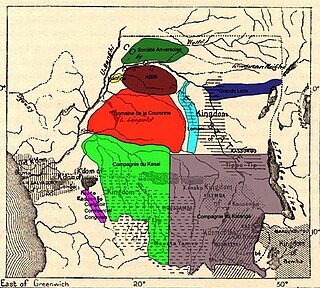 W
WThe Grands Lacs Company was a concession company of the Congo Free State.
 W
WThe Compagnie du Katanga was a concession company of the Congo Free State. The company was founded in 1891 to occupy part of the Free State in order to dissuade a British claim on the land. The company received 99-year mineral exploitation rights on one third of the land and preferential rights for twenty years on the remainder.
 W
WThe Comptoir Commercial Congolais was a concession company of the Congo Free State, which was in personal union with Leopold II of Belgium.
 W
WThe Congo Free State propaganda war was a worldwide media propaganda campaign waged by both King Leopold II of Belgium and the critics of the Congo Free State. Leopold was very astute in using the media to support his virtual private control of the Congo. British campaigner Edmund Dene Morel successfully campaigned against Leopold and focused public attention on the violence of Leopold's rule. Morel used newspaper accounts, pamphlets, and books to publish evidence from reports, eye-witness testimony, and pictures from missionaries and others involved directly in the Congo. As Morel gained high-profile supporters, the publicity generated by his campaign eventually forced Leopold to relinquish control of the Congo to the Belgian government.
 W
WLe Congo illustré was a fortnightly illustrated periodical, published in Brussels by Alphonse-Jules Wauters from December 1891 to December 1895. The magazine was dedicated to Belgian exploration and economic development in the Congo Free State with a focus on geography, ethnography and civil engineering. In 1896 Le Congo illustré was folded into Le Mouvement Géographique, a journal also edited by Wauters.
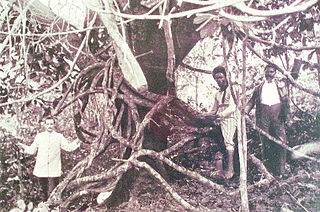 W
WLandolphia owariensis is a species of liana from the family Apocynaceae found in tropical Africa. Latex can be extracted from this plant for the manufacture of natural rubber. Other names for this vine are eta, the white rubber vine and the Congo rubber plant. Congo rubber was a commercial rubber exported from the Congo Free State starting in 1890, most notable for its forced harvesting under conditions of great human suffering, in the Congo Free State, detailed in the 1904 Casement Report. From 1885 to 1908, millions died as a result of murder, deprivation, and disease, with population falling by millions in this period; some writers estimate this loss to be as high as 10 million people.
 W
WThe Congo–Arab War took place in what is now the Democratic Republic of the Congo between the forces of Belgian King Leopold II's Congo Free State and various Zanzibari Arab slave traders led by Sefu bin Hamid, the son of Tippu Tip. Fighting occurred in the eastern Congo between 1892 and 1894. It was a proxy war, with most of the fighting being done by native Congolese, who aligned themselves with either side and sometimes switched sides. The causes of the war were largely economic based, since Leopold and the Arabs were contending to gain control of the wealth of the Congo. The war ended in January 1894 with a victory of Leopold's Force Publique. Initially, King Leopold II collaborated with the Arabs, but competition struck over the control of ivory and the topic of Leopold II's humanitarian pledges to the Berlin Conference to end slavery. Leopold II's stance turned confrontational against his once-allies. The war against the Swahili-Arab economic and political power was presented as a Christian anti-slavery crusade.
 W
WThe Crime of the Congo is a 1909 book by British writer and physician Sir Arthur Conan Doyle, about human rights abuses in the Congo Free State, a private state established and controlled by the King of the Belgians, Leopold II.
 W
WHenri De Bruyne was a sergeant in the Force Publique of the Congo Free State that was sent to Kasongo, Congo Free State, in 1890. He was killed by the soldiers of Sefu bin Hamid.
 W
WHeart of Darkness (1899) is a novella by Polish-English novelist Joseph Conrad about a narrated voyage up the Congo River into the Congo Free State in the Heart of Africa. Charles Marlow, the narrator, tells his story to friends aboard a boat anchored on the River Thames. This setting provides the frame for Marlow's story of his obsession with the successful ivory trader Kurtz. Conrad offers parallels between London and Africa as places of darkness.
 W
WSidney Langford Hinde,, Chevalier de l'ordre royal du lion; Membre honoraire de la Société belge de géographie; Medical Officer of the Interior, British East Africa; Late Captain, Congo Free State Forces; was a military medical officer involved in colonial operations in the Congo and East Africa in the 19th century.
 W
WThe International African Association was a front organization established by the guests at the Brussels Geographic Conference of 1876, an event hosted by King Leopold II of Belgium. The Association was used by King Leopold ostensibly to further his altruistic and humanitarian projects in the area of Central Africa, the area that was to become Leopold's privately controlled Congo Free State. King Leopold volunteered space in Brussels for the International African Association's headquarters, and there were to be national committees of the association set up in all the participating countries, as well as an international committee. Leopold was elected by acclamation as the international committee's first chairman, but said that he would serve for one year only so that the chairmanship could rotate among people from different countries.
 W
WBaron Adolphe Marie Maurice Joostens, was a Belgian diplomat. As a signatory of the Boxer Protocol, the final act at the Algeciras Conference and the Colonial Charter in which Congo Free State was ceded to Belgium, Joostens was an important Belgian diplomat in the age of New Imperialism. Throughout his career, Joostens was able to gain the absolute confidence of king Leopold II of Belgium and eventually he became one of the monarch's favourite diplomats.
 W
WThe King Incorporated was the first history book published by award-winning Scottish journalist and historian Neal Ascherson exploring the course of the Congo Free State from its foundation to annexation, as well as the role of King Leopold II.
 W
WKing Leopold's Ghost: A Story of Greed, Terror and Heroism in Colonial Africa (1998) is a best-selling popular history book by Adam Hochschild that explores the exploitation of the Congo Free State by King Leopold II of Belgium between 1885 and 1908, as well as the large-scale atrocities committed during that period. The book, also a general biography of the private life of Leopold, succeeded in increasing public awareness of these crimes in recent decades.
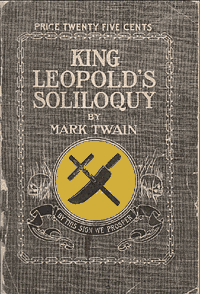 W
WKing Leopold's Soliloquy is a 1905 pamphlet by Mark Twain. Its subject is King Leopold's rule over the Congo Free State. A work of political satire harshly condemnatory of his actions, it ostensibly recounts a fiction monologue of Leopold II speaking in his own defense.
 W
WColonel Henry I. Kowalsky was a notable San Francisco defense attorney. Notably, he was employed by King Leopold II of Belgium as a lobbyist to the US government in favor of the Congo Free State. Kowalsky was known as "Colonel" without having ever been in the military. He earned the designation when he was appointed to, and served as, the Judge Advocate General for California Governor Robert Waterman.
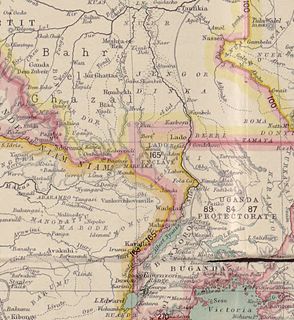 W
WThe Lado Enclave was an exclave of the Congo Free State and later of Belgian Congo that existed from 1894 until 1910, situated on the west bank of the Upper Nile in what is now South Sudan and northwest Uganda.
 W
WLeopold II was the second King of the Belgians from 1865 to 1909 and, through his own efforts, the owner and absolute ruler of the Congo Free State from 1885 to 1908.
 W
WJoseph François Lippens was a Lieutenant in the Force Publique of the Congo Free State during the Congo Arab War. He was killed by the soldiers of Sefu bin Hamid.
 W
WThe Lomani Company was a concession company of the Congo Free State. In the colonial era, the Lomami Company forced the people of the Lomami River region from Opala and Lokilo down to Ilambi to collect large amounts of rubber. The Mbole people of the region vividly described their view of the effect of this work with the phrase wando wo limolo, meaning "tax-caused loss of weight".
 W
WThe Lulonga Company was a concession company of the Congo Free State. It was, with the Société Anversoise and the Abir Congo Company, one of the main producers of rubber in the Free State. The company's rubber production declined in the early 20th century as a result of over harvesting of the natural rubber vine and the entire concession produced just seven tons of rubber in 1905. Like Abir and the Société Anversoise, the Lulonga Company handed back control of the concession to the Congo Free State in 1906.
 W
WRichard Dorsey Loraine Mohun was an American explorer, diplomat, mineral prospector and mercenary. Mohun worked for the United States government as a commercial agent in Angola and the Congo Free State. During his time as commercial agent, he volunteered to command a unit of Belgian artillery in a campaign to force Arab slavers from the colony.
 W
WThe Battle of Rejaf, or the Battle of Bedden, was fought on 17 February 1897 between the Belgian-led forces of the Congo Free State and Mahdist rebels in South Sudan. The battle resulted in a Congolese victory and the permanent expulsion of the Mahdists from the Lado Enclave, as well as the establishment of a Belgian outpost along the Nile.
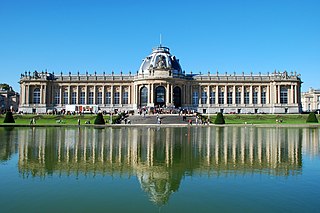 W
WThe Royal Museum for Central Africa or RMCA, colloquially known as the Africa Museum, is an ethnography and natural history museum situated in Tervuren in Flemish Brabant, Belgium, just outside Brussels. It was built to showcase King Leopold II's Congo Free State in the 1897 World Exhibition.
 W
WMuhammad bin Khalfan bin Khamis al-Barwani, commonly known as Rumaliza, was an Arab trader of slaves and ivory active in Central and East Africa in the last part of the nineteenth century. He was a member of the Arabian Barwani tribe. With the help of Tippu Tip he became Sultan of Ujiji. At one time he dominated the trade of Tanganyika, before being defeated by Belgian forces under Baron Francis Dhanis in January 1894.
 W
WSefu bin Hamid was a Swahili-Zanzibari slave trader and the son of Tippu Tip. He was killed while fighting in the Congo–Arab War.
 W
WThe Société Anversoise was a concession company of the Congo Free State, headquartered in Antwerp. It was, with the Lulonga Company and the Abir Congo Company, one of the main producers of rubber in the Free State. Alongside Abir and the Lulonga Company the Société Anversoise handed back control of the concession to the Congo Free State in 1906. The Société Anversoise merged with Abir in 1911 to form the Compagnie du Congo Belge with a focus of the management of rubber plantations instead of the harvesting of naturally occurring rubber. The Société Anversoise was quoted on the Antwerp Stock Exchange from 27 July 1898.
 W
WThe Stairs Expedition to Katanga (1891−92), led by Captain William Stairs, was the winner in a race between two imperial powers to claim Katanga, a vast mineral-rich territory in Central Africa for colonization. The mission became notable when a local chief,, was killed, and also for the fact that Stairs, the leader of one side, actually held a commission in the army of the other.
 W
WTippu Tip, or Tippu Tib, real name Hamad bin Muhammad bin Juma bin Rajab el Murjebi, was an Afro-Arab slave trader, ivory trader, explorer, plantation owner and governor. He worked for a succession of the sultans of Zanzibar. Tippu Tip traded in slaves for Zanzibar's clove plantations. As part of the large and lucrative ivory trade, he led many trading expeditions into Central Africa, constructing profitable trading posts deep into the region. He bought the ivory from local suppliers and resold it for a profit at coastal ports.
 W
WThe Union Minière du Haut-Katanga, often abbreviated to Union Minière or UMHK, was an Anglo-Belgian mining company which operated in the copperbelt in the modern-day Democratic Republic of the Congo between 1906 and 1966.
 W
WVers l'avenir, less commonly known by its Dutch title Naar wijd en zijd, is a Belgian nationalist song which was also the national anthem of the Congo Free State. Upon the annexation of the Congo Free State as a colony of Belgium, this anthem was replaced with La Brabançonne, the national anthem of Belgium. Vers l'avenir's lyrics were written by Gentil Theodoor Antheunis (1840-1907). It was also adopted as the anthem of the Rexist Party, a Fascist political movement founded in 1930 by Léon Degrelle.
 W
W